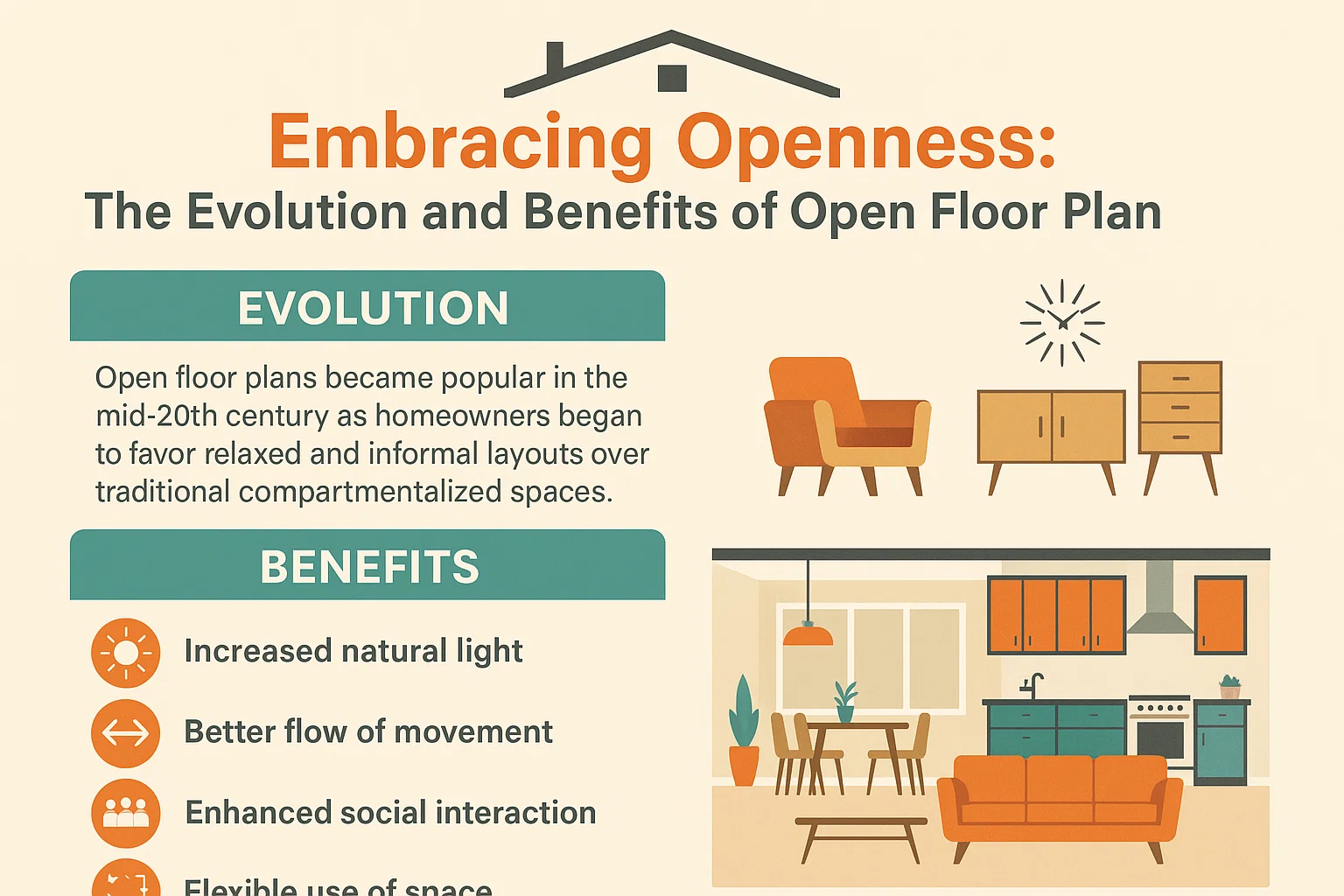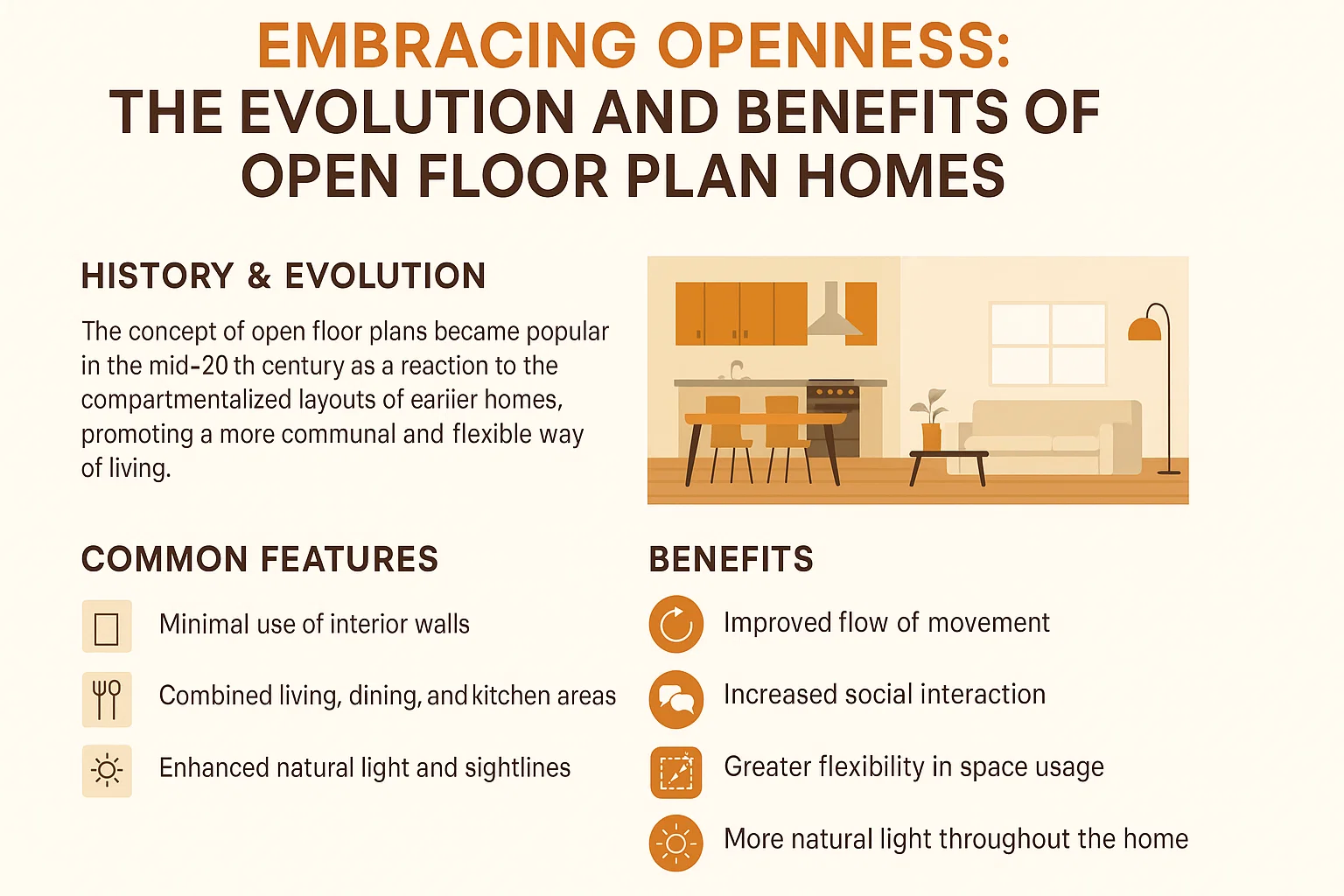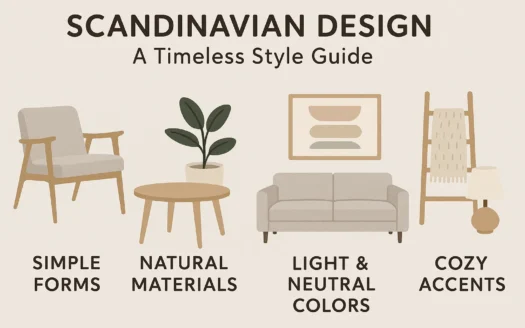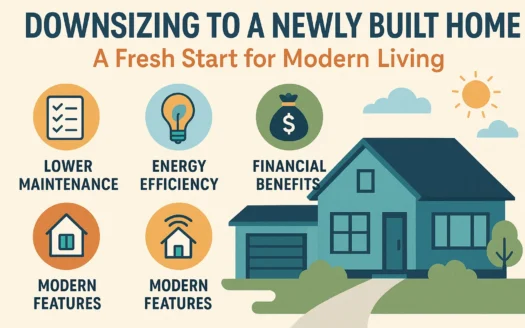Embracing Openness: The Evolution and Benefits of Open Floor Plan Homes

Embracing Openness: The Evolution and Benefits of Open Floor Plan Homes
What Is an Open Floor Plan?
An open floor plan refers to a home layout that minimizes walls between common living areas, creating a unified, spacious environment. Unlike traditional designs that compartmentalize rooms for specific purposes, open concepts merge functional zones—such as kitchens, dining areas, and living rooms—into a cohesive space. Designers often use architectural elements like islands, cabinetry, or varying ceiling heights to subtly define areas without physical barriers. This layout remains a top choice for modern homeowners and architects alike, celebrated for its adaptability and contemporary appeal.
The History of Open Floor Plans
The shift toward open floor plans began as societal norms and technological advancements reshaped home life. Visionaries like Frank Lloyd Wright reimagined residential spaces to align with evolving family dynamics and new construction capabilities. Early 20th-century American homes prioritized formal, segregated rooms connected by central hallways—a design suited to large estates and rigid social customs. Kitchens were hidden, dining rooms were isolated, and entertaining spaces were strictly separated.
The rise of suburban homeownership and innovations like central air conditioning in the mid-20th century sparked demand for more casual, connected living environments. Families sought layouts where parents could interact with children while cooking, and guests could mingle freely. Architects embraced this trend, crafting smaller, efficient homes that emphasized fluidity and light. Today, open floor plans remain a cornerstone of residential design, reflecting modern values of flexibility and togetherness.
Why Homeowners Love Open Floor Plans
- Enhanced Communication: Removing walls fosters effortless interaction between family members or guests, whether preparing meals in the kitchen or relaxing in the living area.
- Abundant Natural Light: Fewer walls allow sunlight to flood the space, creating a bright, airy atmosphere and blurring the line between indoor and outdoor living.
- Flexible Design Opportunities: Open layouts adapt to diverse needs, from home offices and gyms to creative studios, without requiring structural changes.
- Maximized Space: Eliminating walls makes small homes feel larger and optimizes square footage, boosting both functionality and resale value.
Open Floor Plans in Modern Homebuilding
Many builders, including Pre-Construction Homes, prioritize open floor plans due to their enduring popularity. These designs cultivate a sense of community within the home, aligning with the preferences of today’s families. Prospective buyers are invited to explore the innovative layouts available in new constructions, which blend practicality with modern aesthetics.




